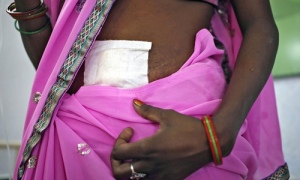
Many years ago our son Dave wrote a Letter to the Editor of the Herald about the importance of community. As I remember, he praised the new benches in downtown Durango as a way to promote community. I was reminded of that after the events of the last few days.
            My wife and I were headed to a music festival on June 7th. Gail was driving and I was reading the Herald when she said something that grabbed my attention.
I looked up and saw a white pickup truck headed right for us, in our lane. The next thing I remember clearly was being surrounded by the car’s airbag (which had already deflated, and finding pieces of glass. A couple from Odessa Texas peered through my window and asked if I was ok. I don’t remember exactly what I said—but was happy that there were people there, and that I could respond. I started to feel faint, but was able to recline my seat back and felt better.
About that time another friendly face appeared at my window. David Austin, a first responder, had been a neighbor at Heartwood and is well known for his sense of humor—but then he was very serious. He asked questions to determine if I was oriented, then swiftly evaluated my physical status. Soon he was replaced by his wife, Sue, who is a nurse in the Centura system. Sue reassured me that I didn’t have a hemopericardium because my neck veins weren’t sticking out. That condition, resulting from chest trauma, can cause faintness, then death if not promptly treated. I was able to walk a few steps and eventually got into an ambulance.
Gail and I were both taken to Mercy where CT scans showed we both had broken ribs and other minor, but painful, chest trauma. Gail didn’t fare as well as me. She has a fracture of left leg behind the kneecap—the tibial plateau. The “jaws of life†were needed to remove the doors on her side of the car, and there’ll be no walking for her for months.
We have had amazing support from the many communities in which we are fortunate to participate. A partial list includes the Rotary Club of the Pine River Valley and the Pine River Library (both in Bayfield, Colorado, near where we live). People in the Durango Choral Society with which we both sing, Four Corners OB-GYN and San Juan Basin Public Health where I worked also sent cards or flowers. I’ve had calls and messages from the Friends Meeting (Quakers) to which I belong. Gail has had lots of visitors who have been wonderful to cheer her up.
We are very fortunate to live in a community that has been supportive, Heartwood Cohousing. Recently I have been able to walk Ty, our dog, but neighbors have helped out at first and when I am not at home. Other neighbors are doing our community jobs for us and are helping to care for our plants and old horse.
The medical care has been excellent from the scene of the accident to Mercy where Gail had surgery to place an external scaffolding which immobilizes the affected knee. She was then moved to Cottonwood Rehab where we were greeted by friends and by strangers who soon became friends. She returned to Mercy for the expert surgery on her knee, and then back again to Cottonwood—it was like coming home. They permit Ty to visit (so long as he’s on a leash) and allow me and other guests to join Gail for meals. Gail enjoys the laughter of visiting kids in the in the common areas. The State Patrol Trooper who has been investigating the accident has been wonderful to deal with.
This has little to do with issues of human population—except for one gratifying letter from someone I don’t know. It affirms the value of these columns. It reads, in part: “I hope you and your wife Gail have quick recoveries from the accident. I have followed your newspaper column for years and [value] your views on women’s rights and world overpopulation. Thank you for your service and educating all of us. Get well soon.â€
Thank you, Tim W., and the many communities who have supported us.
©Richard Grossman MD, 2019
